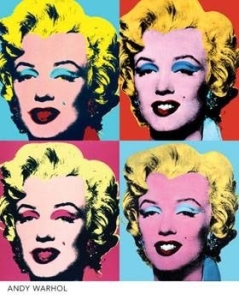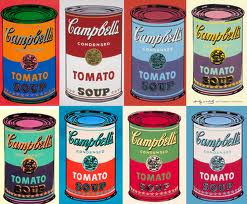What is POP ART?
Pop Art known as the art of popular cultures. Pop Art is an art that employs aspects of mass culture, such as comic books, billboards, advertising, packaging, screening, and etc. Pop Art related to Dadaism. Dadaism is a way of life (provocative and absurd).
Characteristic of pop art is a sense of optimistic and presented colorfully. Images used that represent the popular culture of the day. Often everyday consumer products, such as soup cans or coke bottles were used as images. Images of often colourful and distinctive. Commercial printing methods such as silk screen used to produce paintings, making it possible for the general public to purchase a copy. Pop artists often use images based on comic strips. Multiple images of the same subject often used.
Pop Art involved in 1960’s in the post war. Pop Art established because of The Pop Artists such as Andy Warhol and David Hockney. The pop artist create pop art as an art movement in its own right.
The use of pop art techniques meant that the work could be reproduced and printed very easily. The pop artist work was often amusing and used everyday objects such as coke tins, dollar bills and comic strips as their subjects. Pop art also used the faces of well known people such as Marilyn Monroe, again as their subjects.
Now I want to describe one of the most famous pop artist, Andy Warhol. He originally worked as a ‘commercial artist’ and his subject matter was derived from the imagery of mass-culture: advertising, comics, newspapers, TV and the movies.
Look at these pop art work.

“Marilyn Monroe” by Andy Warhol

“Campbell’s Soup Cans” by Andy Warhol
Those pop art works are made by Andy Warhol. In that picture, Andy Warhol choose Marilyn Monroe and Campbell’s Soup Cans as his pop art object.
His works explore the relationship between artistic expression, celebrity culture and advertisement that flourished by the 1960s. After a successful career as a commercial illustrator, Warhol became a renowned and sometimes controversial artist.
Warhol embodied the spirit of American popular culture and elevated its imagery to the status of museum art. He used second-hand images of celebrities and consumer products which he believed had an intrinsic banality that made them more interesting. He felt that they had been stripped of their meaning and emotional presence through their mass-exposure.
Warhol’s paradoxical statements such as, “I am a deeply superficial person” or “art should be meaningful in the most shallow way” are echoed in his work. The left hand panel of his ‘Marilyn Diptych’ is a crudely colored photograph of the actress whose sense of ‘self’ is degraded through the repetition of her image, whereas the right hand panel is a physically degraded black and white image that reflects the ephemeral qualities of fame. Their combined panels are a memorable discourse on the nature of celebrity and its power to both create and destroy its acquaintances. The ‘diptych’ format was originally used in medieval painting for religious images of personal devotion, an appropriate choice considering Warhol’s fascination for Marilyn Monroe.
References:
http://art-bydens.blogspot.com/2012/08/ten-famous-pop-art-artists.html#.UoOdRXA733s
http://www.technologystudent.com/prddes1/popart1a.html
http://www.artyfactory.com/art_appreciation/art_movements/pop_art.htm
